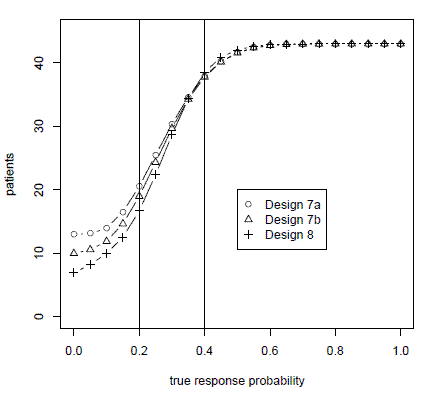Suppose a new study comes out saying a drug or a food or a habit lowers your risk of some disease. What is the probability that the study’s result is correct? Obviously this is a very important question, but one that is not raised often enough.
I’ve referred to a paper by John Ioannidis (*) several times before, but I haven’t gone over the model he uses to support his claim that most study results are false. This post will look at some equations he derives for estimating the probability that a claimed positive result is correct.
First of all, let R be the ratio of positive findings to negative findings being investigated in a particular area. Of course we never know exactly what R is, but let’s pretend that somehow we knew that out of 1000 hypotheses being investigated in some area, 200 are correct. Then R would be 200/800 = 0.25. The value of R varies quite a bit, being relatively large in some fields of study and quite small in others. Imagine researchers pulling hypotheses to investigate from a hat. The probability of selecting a hypothesis that really is true would be R/(R+1) and the probability selecting a false hypothesis is 1/(R+1).
Let α be the probability of incorrectly declaring a false hypothesis to be true. Studies are often designed with the goal that α would be 0.05. Let β be the probability that a study would incorrectly conclude that that a true hypothesis is false. In practice, β is far more variable than α. You might find study designs with β anywhere from 0.5 down to 0.01. The design choice β = 0.20 is common in some contexts.
There are two ways to publish a study claiming a new result: you could have selected a true hypothesis and correctly concluded that it was true, or you could have selected a false but incorrectly concluded it was true. The former has probability
(1 − β)R/(R + 1)
and the latter has probability
α/(R + 1).
The total probability of concluding a hypothesis is true, correctly or incorrectly, is the sum of these probabilities, i.e.
((1 − β)R + α)/(R + 1).
The probability that a study conclusion is true given that you concluded it was true, the positive predictive value or PPV, is the ratio of
(1 − β)R/(R + 1)
to
((1 − β)R + α)/(R + 1).
In summary, under the assumptions above, the probability of a claimed result being true is
(1 − β)R/((1 − β)R + α).
If (1 − β)R < α then the model say that a claim is more likely to be false than true. This can happen if R is small, i.e. there are not a large proportion of true results under investigation, and if β is large, i.e. if studies are small. If R is smaller than α, most studies will be false no matter how small you make β, i.e. no matter how large the study. This says that in a challenging area, where few of the ideas being investigated lead to progress, there will be a large proportion of false results published, even if the individual researchers are honest and careful.
Ioannidis develops two other models refining the model above. Suppose that because of bias, some proportion of results that would otherwise have been reported as negative are reported as positive. Call this proportion u. The derivation of the positive predictive value is similar to that in the previous model, but messier. The final result is
R(1 − β + uβ)/(R(1 − β + uβ) + α + u − αu).
If 1 − β > α, which is nearly always the case, then the probability of a reported result being correct decreases as bias increases.
The final model considers the impact of multiple investigators testing the same hypothesis. If more people try to prove the same thing, it’s more likely that someone will get lucky and “prove” it, whether or not the thing to be proven is true. Leaving aside bias, if n investigators are testing each hypothesis, the probability that a positive claim is true is given by
R(1 − βn)/(R + 1 − (1 − α)n − Rβn).
As n increases, the probability of a positive claim being true decreases.
The probability of a result being true is often much lower than is commonly believed. One reason is that hypothesis testing focuses on the probability of the data given a hypothesis rather than the probability of a hypothesis given the data. Calculating the probability of a hypothesis given data relies on prior probabilities, such as the factors R/(R + 1) and 1/(R + 1) above. These prior probabilities are elusive and controversial, but they are critical in evaluating how likely it is that claimed results are true.
Related: Adaptive clinical trial design
(*) John P. A. Ioannidis, Why most published research findings are false. CHANCE volume 18, number 4, 2005.


